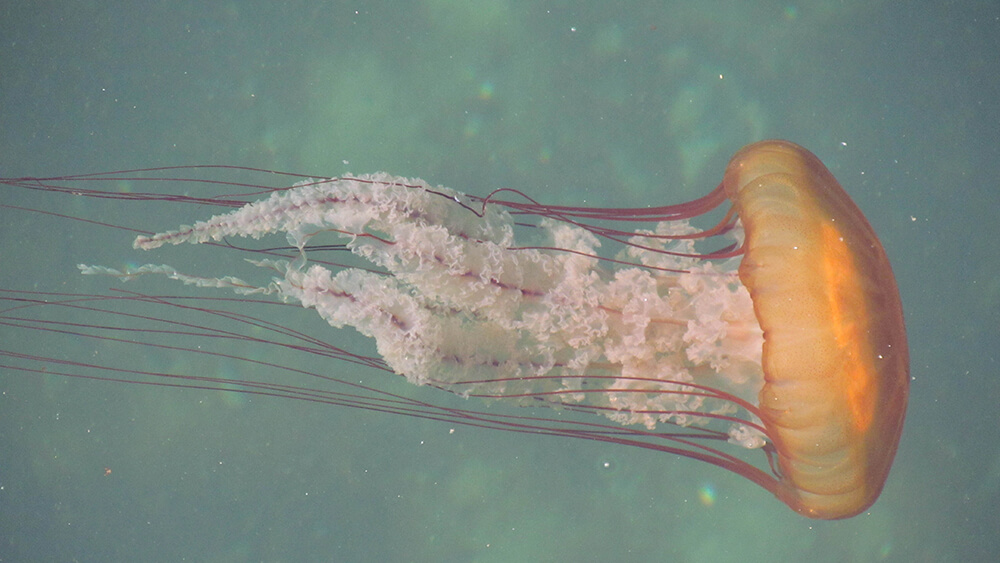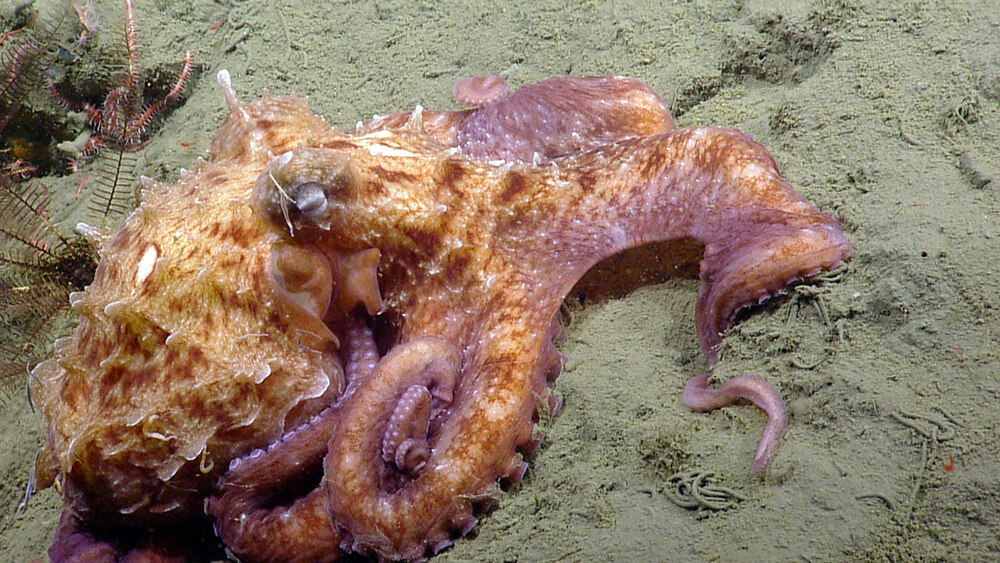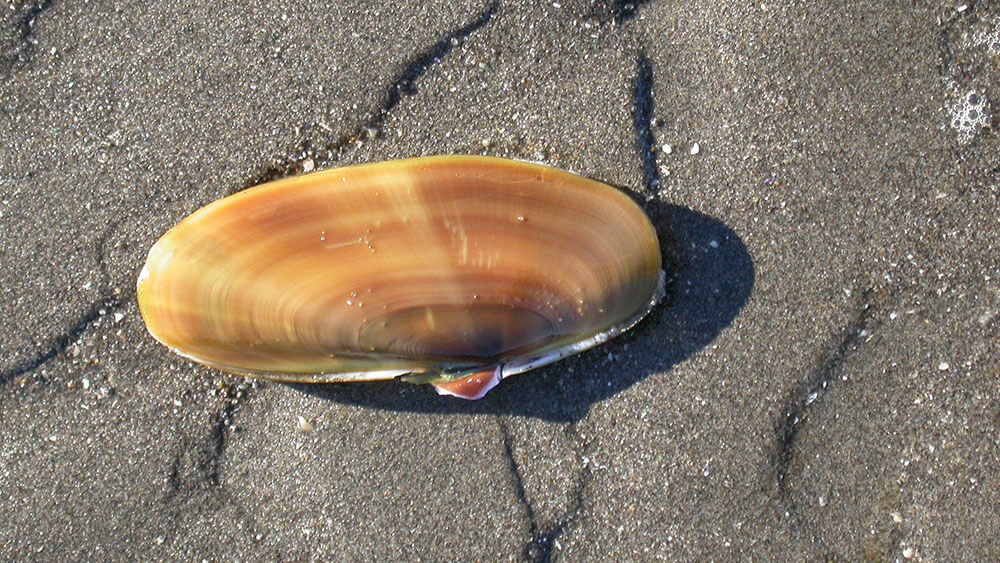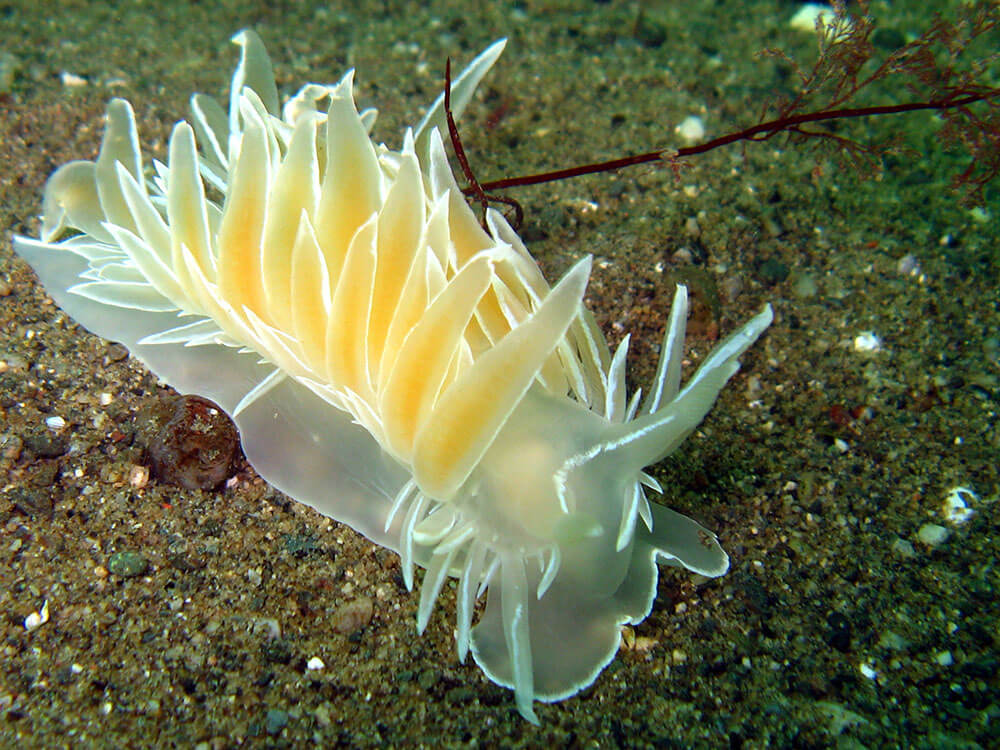Invertebrates

Invertebrates (animals without backbones) are the largest group of animals on the planet. In the ocean, they reveal every conceivable function and design that evolution could muster. Some are simple digestive systems encased in a gelatinous film. Others, like the octopus with its complex eyes, show powerful evolutionary development. Intertidal invertebrates like sea stars must live in two worlds, submerged by high tide and exposed at low. Bottom dwellers, like basket stars, live in a strangely stable environment of darkness, pressure, and cold.
Many factors determine the distribution, species composition, and abundance of the invertebrate fauna. Seafloor geology, types of rocky substrate or unconsolidated sediments, offshore currents and circulation patterns, exposure to waves, water depth, Columbia River low salinity plume, and presence of mammal predators all influence the niches occupied by the various species.

Upwelling off the coast brings cold, nutrient-rich water to the nearshore zone where it nourishes high marine plant productivity. This provides food and habitat for invertebrates that suspension feed or graze on algae.
The rocky intertidal habitat supports a diverse array of invertebrate species. Representative invertebrates include sponges, bivalves, isopods, amphipods, shrimp, barnacles, bryozoans, sea urchins, sea cucumbers, and sea stars.
Invertebrates residing in the boulder and cobble areas are diverse and consist of organisms living on and around the rocks and the soft sediment beneath them. Different species dominate in this habitat than in the rocky intertidal areas. Invertebrates living in the sediment under the rocks include mud shrimp (Upogebia spp.), mud dwelling brittle stars, and several species of clams and polychaete worms. Invertebrates living on or under boulders and cobbles include barnacles, limpets, amphipods, isopods, sea snails (Lacuna spp. and Tegula spp.), several species of crabs, the sea squirt Clavelina, and various species of edible clams (butter clams, littleneck clams, and horse clams).
Invertebrates found in sandy intertidal areas are less diverse than in other habitats, but some species may be found in large numbers. Researchers have observed great quantities of amphipod crustaceans and polychaete and nemertean worms at several sites on the Olympic Coast. Amphipods in the genus Euhaustorius were found in densities up to 10,670 individuals per square meter. Densities of bloodworms in the genus Thoracophelia (previously Euzonus) reached almost 7,000 per square meter. Other invertebrates present include razor clams (Siliqua patula), isopods, mysids (opossum shrimp), sand dollars, purple olive snails, several species of clam (e.g. Macoma secta and Tellina bodegensis), and Dungeness and mole crabs.

Invertebrates associated with kelp beds include many encrusting varieties such as sponges, bryozoans, and tunicates. Other invertebrates include amphipods, copepods, euphausiids, numerous species of crabs, sea urchins, shrimps, sea stars, brittle stars, periwinkles, limpets, sea snails, sea slugs, scallops, and abalone.

Several species of squid, octopus, jellyfish, salps, heteropods, shrimp, euphausiids, and other macro-invertebrates can be found in the pelagic (open-ocean) environment. Numerous larval invertebrates are also found there during their planktonic stages of development.
Thus, both the coastal and offshore areas are important to invertebrates depending on whether the invertebrates are sedentary or pelagic.

